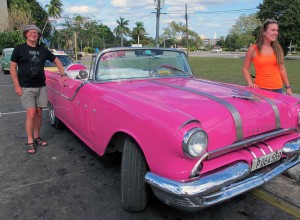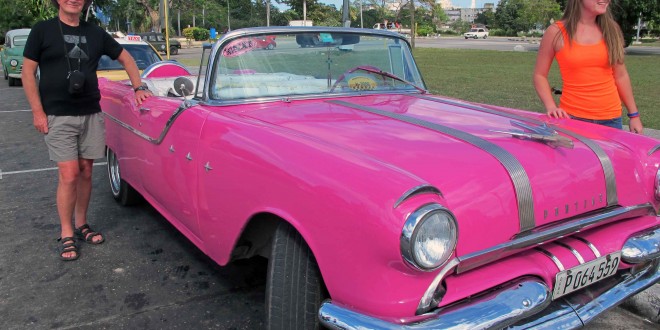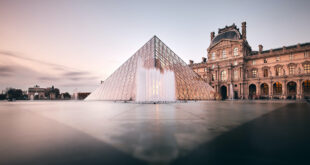Part One: Three Days in Havana
Cuba: the land of classic American Cars, dancing in the streets and flowing with rum. It sounded like an intriguing holiday destination so we went.
We made it to Cuba just before President Obama, the Rolling Stones and the hordes of American tourists who are bound to follow as soon as their travel restrictions are lifted. It was a great holiday. Cuba was a much more fascinating and complex country than we could have imagined.
John and I travelled as a foursome with Cindi and Lindsay, two good friends. We had booked an 8 day Locally Sourced Cuba Tour starting with several days in Havana
Our tour guide, Yaniet, who accompanied us throughout our tour, was a delightful young woman who had studied English at University for 5 years and spoke it perfectly. As we travelled she unravelled Cuba’s complicated history for us and gave a young person’s perspective on what it feels like to live in Cuba today.
Yaniet’s parents had lived through what Cubans rather euphemistically call “The Special Time” after the Soviet Union collapsed and pulled out of Cuba. This was catastrophic for Cuba. Food became so scarce that Cubans lost on average thirty percent of their body weight.
Life is somewhat better now but the average wage in Cuba is still extremely low ($30 a month) and jobs are hard to come by. On the positive side they have a wonderful system in place where health and education are free (including tertiary education). However poor they may be, parents can be sure that their children will be able to go on to university. As well as this each family gets some free food, not enough to sustain them but it all helps. They can also buy the rest of their basic food supplies cheaply at government stores.
The tour company pays Yaniet a higher wage than the pittance she earnt as a government employee and she loves her job. But it is almost impossible for her to go travelling, which she would love to do, as visas are incredibly difficult to get.
In Havana (as in other parts of Cuba) our tour company had booked us into a Cuban Homestay (Casa Particulare). These are much friendlier and cheaper than a hotel, and a good chance to meet some locals. They were all very comfortable and clean. And there was always a hearty breakfast.
There was a lot to see and do in Havana. It’s a vibrant city with a laidback atmosphere. And it felt very safe to walk around on our own when we had free time.
Some highlights: Our walking tour of Old Havana
We went for a guided walk around the old part of the city and stopped at various landmarks.
The streets are lined with colonial architecture, 16th century fortresses and countless churches and there was a fascinating blend of different architectural styles.
I was shocked by the dilapidated state of many of the buildings. These faded beauties were a sharp contrast to our stylishly restored homestay.
Old Havana has been designated as a World Heritage site so hopefully it will gradually be restored to its former glory.
We were glad we brought comfortable and sturdy walking shoes. You need them in Cuba! Some of the footpaths as well as the roads were badly in need of repair.
Pina Coladas: Once we discovered how delicious (and cheap) the local Pina Coladas were we were hooked! For sometimes less and never much more than the price of a coffee (2-5 dollars) they became a daily indulgence.
 A Ride in a Classic Car: We fulfilled our dream of taking a ride in a classic American convertible car. There are still about 60,000 pre-1960 American cars on the roads in Cuba today, many of which were abandoned by their owners when they fled Cuba in 1959.
A Ride in a Classic Car: We fulfilled our dream of taking a ride in a classic American convertible car. There are still about 60,000 pre-1960 American cars on the roads in Cuba today, many of which were abandoned by their owners when they fled Cuba in 1959.
We hopped in feeling like teenagers (although we’d never had the chance to have a ride in one so magnificent when we were young!) And were chauffeured around the three parts of Havana, Old Havana, New Havana and the wealthier Miramar where diplomats reside in beautiful houses with leafy gardens.
We finished our day at the elegant Hotel Nacional in Vedado. We sat outside and had yet another Pina Colada and watched the sunset over the harbour while a Cuban band played.
Lunch at St Laurent: To reach the St Laurent restaurant we had to ride up 4 stories in an antique escalator. St Laurent is one of the new Paladares (family restaurants) which have sprung up all over Havana since the recent reform programme which allows such privately-run enterprises. Cuba used to be known for its plain, homely food. But they are changing Cuba’s reputation for the better with their innovative menus.
St Laurent is housed in what used to be the penthouse of a 1950s apartment. The Spanish influenced fusion dishes were really good and stylishly presented. We began with a welcome mojito and I followed this with pumpkin soup, a fish dish and a delicious ice-cream puff topped caramel sauce with a garnish of tropical fruit.
Tapas at O’Reiley’s: Another little restaurant recommended by our tour guide where they serve fabulous and very reasonably priced tapas including ceviche, meatballs, bruschetta and empanadas. And of course we indulged in more Pina Coladas!
Floridita: Like droves of other tourists we paid homage to Ernest Hemingway by having a daiquiri in this bar which he used to frequent. His statue stands in the corner. We enjoyed the complimentary bowl of plantain chips while admiring Hemingway’s statue standing in a corner.
The Musea Nacional de Belles Artes: In this gorgeous modern building we saw the famous “Cuban Mona Lisa”, painted by Victor Manual Garcia of the archetypal Cuban woman as well as works by Cuba’s most famous painter Wilfrido Lam.
The extensive collection of Cuban surrealist, portrait, landscape , still life and religious art show many influences of European painting schools Surprisingly, for a country in which politics is never far from the surface, only a few of the works were political.
Revolutionary Museum: This was housed in the old presidential palace, a grand rococo building once owned by Batistsa. I was keen to learn more about Cuban revolutionary history so was disappointed that the many photographs documenting the revolution and accompanying military artefacts were poorly displayed and curated .
The most interesting exhibits were in the garden. Here stood the small boat in which Fidel and 82 of his soldiers had journeyed from Mexico to Cuba to start the revolution as well as the tank which they rode to stop the Bay of Pigs invasion.
Callejon de Hamel: Here the artist Salvador Gonzales Escalona who lives locally has painted large and vividly coloured murals on the walls dedicated to the Afro Cuban Santeria religion.
In the adjoining alley there are also funky sculptural pieces made from recycled materials created by younger artists who Salvador teaches and inspires. He arrived as we were there and I felt honoured to meet him.
Although the original purpose of the murals was spiritual they have become a big tourist attraction and tourists can be pressured into buying a CD of the public rumba sessions that take place there every Sunday or hassled in other ways.
It was good to be there midweek, at a quiet time, so we could have an unhurried look around and I did buy some small paintings from the artist who showed us around.
By Lyn Potter. Read more here.










Join the Discussion
Type out your comment here:
You must be logged in to post a comment.